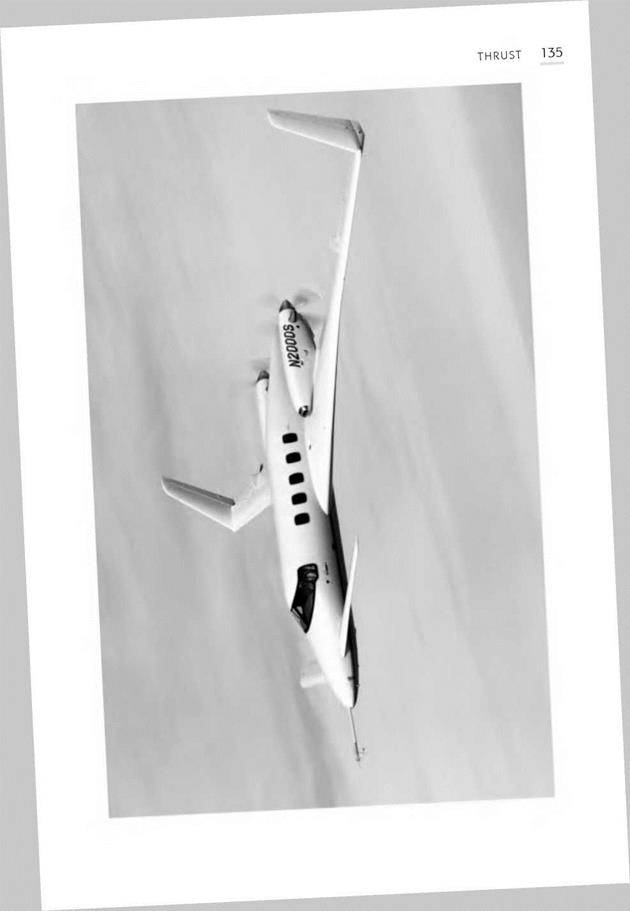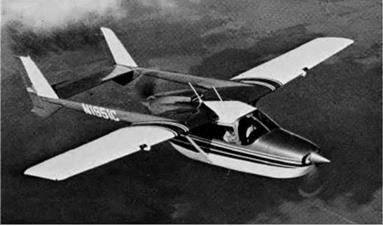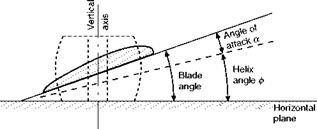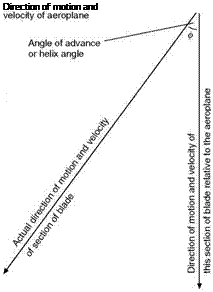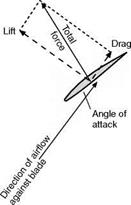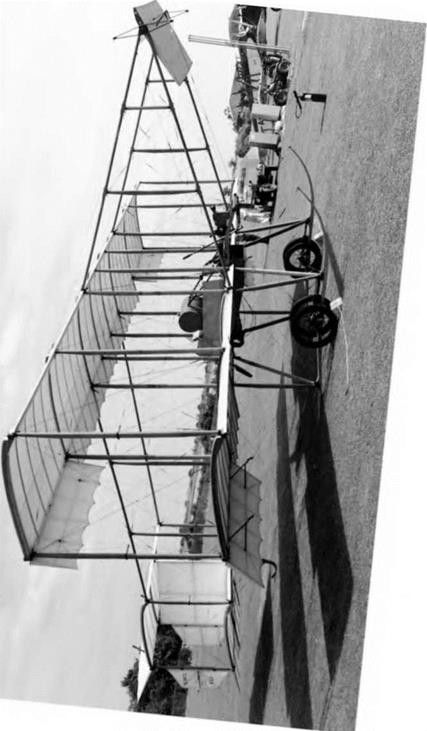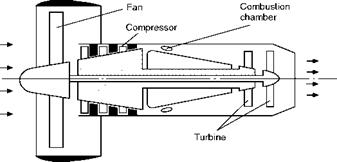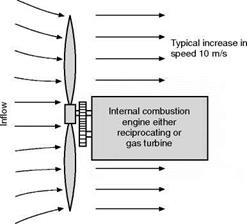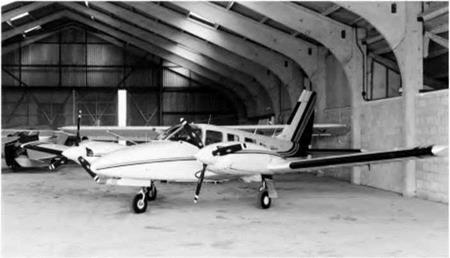Variable pitch
For low-speed aeroplanes the thrust of a fixed-pitch propeller is usually found to be greatest when there is no forward speed, i. e. when the aeroplane is stationary on the ground. The thrust developed under these conditions is called the static thrust, and its large value is very useful since it serves to give the aeroplane a good acceleration when starting from rest and thus reduces the run required for taking off. But in high-speed aircraft a fixed-pitch propeller designed for maximum speed would have such a large pitch, and, therefore, such steep pitch angles, that some portions of the blades would strike the air at angles of as much as 70° or more when there is no forward speed, the efficiency and static thrust would be very poor, and great difficulty would be experienced in taking off. The only remedy is variable pitch.
This requirement led to the development of the so-called constant-speed propeller (Fig. 4J) in which the pitch is automatically adjusted so that the propeller revolves at a given rate decided by the pilot, and remains at that rate irrespective of throttle opening or manoeuvres of the aeroplane. Thus engine and propeller can work at high efficiency irrespective of conditions, such as take-off, climb, maximum speed, altitude, and so on.
|
|
Fig 41 Constant-speed propeller
A classic constant-speed propeller design. The hydraulically-actuated speed control unit is housed in the small domed unit on the front of the hub.
It has already been stated that there are problems common to propeller and helicopter blades, and one of these is that of variable pitch, which in helicopters is a virtual necessity as a means of control.
An extension of the idea of variable pitch leads to a propeller with the pitch variable not only over the range of blade angles that will be required for normal conditions of flight but beyond these angles in both directions.
If the blade can be turned beyond the normal fully-coarse position until the chord lies along the direction of flight, thus offering the minimum resistance, the propeller is said to be feathered. This condition is very useful on a multiengined aircraft for reducing the drag of the propeller on an engine that is out of action. It has another advantage too in that it is a convenient method of stopping the propeller and so preventing it from ‘windmilling’; this reduces the risk of further damage to an engine that is already damaged.
The turning of the blade beyond the fully-fine position makes the propeller into an effective air brake; it has exactly the opposite effect to feathering by causing the maximum drag, which occurs when the blade angle is approximately 2° or 3°.
If the blade angle is still further reduced, i. e. to negative angles, then instead of allowing the blades to windmill, we can run the engine and produce negative thrust or drag. This produces an excellent brake for use in slowing up the aeroplane after landing since it gives a high negative thrust at low forward speeds.











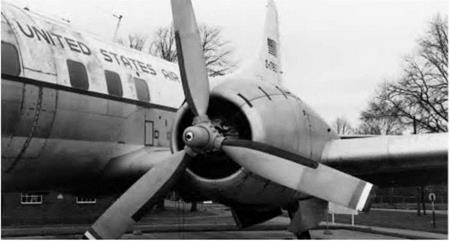


 Direction of motion of aeroplane
Direction of motion of aeroplane